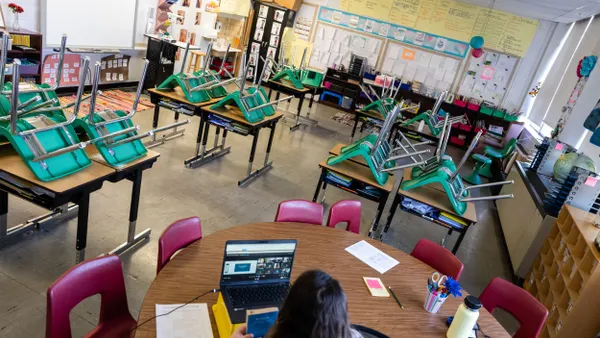Monica McHale-Small is president of the Learning Disabilities Association of America Board of Directors, on which Bev Johns and Collin Diedrich also serve.
Remote learning, hybrid learning, and in-person learning during this tragic time of the COVID-19 pandemic has placed our educational system in turmoil. Children, educators and parents live in continual anticipation and fear.
In some cases, schools are forced to make a decision to close with a day or so notice. Educators are faced with monitoring COVID-19 cases and keeping their classes as sanitized as they can. Parents who are worried about their jobs also worry about whether their child will be schooling in-person or remotely, and they struggle with childcare plans.
Children sense anxiety and fear all around them. They are used to structure and routine, but now they don’t know from day to day what their schedule will be, and they are worried they or a family member may get the virus.
In addition to these difficulties, the pandemic has exposed to the general public the stark inequities in funding and resources that plague public schools in the United States. Countless students in both urban and rural settings lack access to remote learning, thus many have been lost in the chaos that currently exists.
During the 2019-2020 school year, schools closed shortly before statewide assessment occurred in most states. As a result, testing requirements were waived by the U.S. Department of Education. In September, the U.S. Secretary of Education notified districts statewide assessment would proceed this year.
As the coronavirus spreads rapidly, schools are worried they will not be able to conduct statewide assessment. There have been questions about whether states can or should apply for waivers of the testing requirements. Civil rights and advocacy groups are justifiably concerned that two years without testing data would endanger the ability to monitor and support the students who are most at-risk.
The Learning Disabilities Association of America believes it is important to assess students to ascertain current achievement levels and to assess the impact of the disruption of traditional schooling. At the same time, we are unconvinced that high-stakes, statewide assessments as they have been implemented to date have resulted in the improved student outcomes policymakers and reformers promised.
Indeed, a decade of overall flat NAEP data and persistent achievement gaps suggests they have not. Yes, assessment is critical for instructional improvement, but where is the evidence that the millions of tax dollars expended on statewide assessments have resulted in improved academic achievement? Are the summative assessments utilized by most states effective, or is it time to explore other options for monitoring student learning?
As we approach one year since schools were abruptly forced to close to in-person instruction, the numbers of students whose needs have gone unmet due to a lack of resources grows exponentially. We understand there are numerous reasons why education funds meant for one purpose cannot be quickly and easily reallocated for other purposes. However, parents, teachers and others who are experiencing pandemic-related difficulties that could be alleviated or at least improved with increased financial resources will struggle to understand why stressful and costly testing continues on when education has not.
During this pandemic, the federal government should be prioritizing supporting states and ensuring schools have the tools and funding to keep classrooms clean and safe for all students, and that the necessary instructional, social and emotional supports are in place.
Should Miguel Cardona, President-elect Biden’s education secretary nominee, be confirmed, he will begin his tenure faced with the question of whether to permit waivers to state assessment plans. Perhaps this is the time to pause to study the complexity of the issue and how standardized assessment can best be utilized in the support of student achievement. Yes, we need systems to monitor student outcomes, but first we must ensure all students have equitable access to high-quality education.









